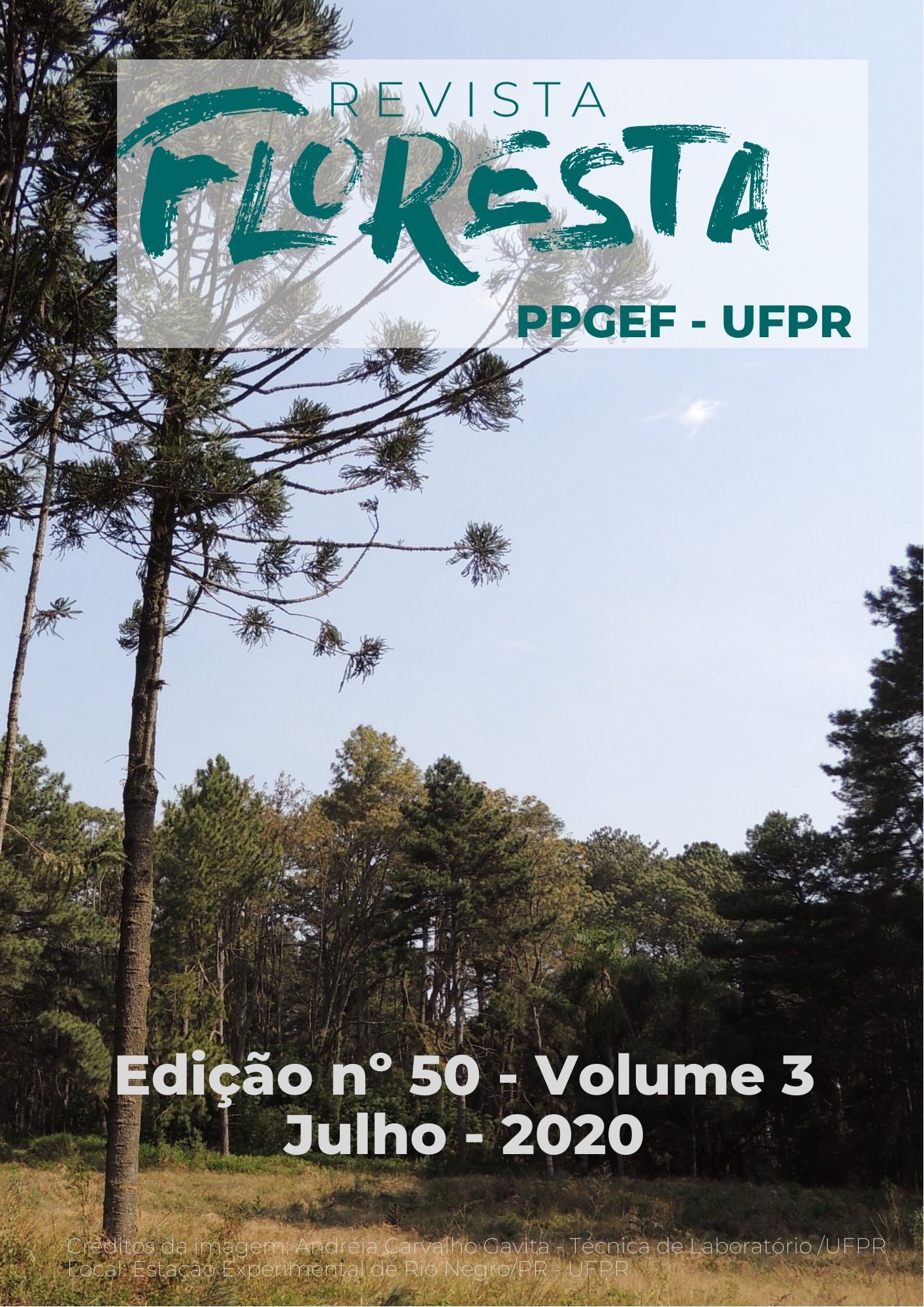EFFECT OF WORKING RANGE ON PRODUCTIVITY AND COSTS OF HARVESTING MACHINES IN A EUCALYPTUS STAND
DOI:
https://doi.org/10.5380/rf.v50i3.64943Palavras-chave:
Operational planning, sustainability, wood harvesting.Resumo
Wood harvesting should be planned to reduce environmental impacts by minimizing machine traffic, increase productivity and reduce costs. In this context, the aim of this study was evaluate the effect of working range on operational performance of a harvester and forwarder in a Eucalyptus saligna stand under a clear cutting regime. The study was carried out in Paraná State, Brazil, in a cut‐to‐length system in cutting and wood extraction operations in two working ranges: T1 - width of 12 m with a cut of four planting lines; and T2 - width of 18 m with a cut of six planting lines. A time and motion study was performed to determine work cycle times, productivity, production costs, and machine traffic, with working ranges compared by the t-test (α = 0.05) for independent samples. The results showed that the wood processing and loading elements consumed the longest operating cycle time in cutting and wood extraction. The harvester machine presented higher productivity (61.05 m³ PMH0-1) in the T1 working range, while the forwarder was superior (48.32 m³ PMH0-1) in the T2 working range. Regarding the wood harvesting system, it was observed that the T2 working range enabled a reduction of 1% in production costs, which is important when considering the large scale production of the company, while there was a 33.4% reduction in traffic. Therefore, an increase in machines’ working range can provide operational and environmental benefits to wood harvesting operations in forest plantations.
Downloads
Publicado
Como Citar
Edição
Seção
Licença
Direitos Autorais para artigos publicados nesta revista são do autor, com direitos de primeira publicação para a revista. Em virtude da aparecerem nesta revista de acesso público, os artigos são de uso gratuito, com atribuições próprias, em aplicações educacionais e não-comerciais.A revista, seguindo a recomendações do movimento Acesso Aberto, proporciona acesso publico a todo o seu conteudo, seguindo o principio de que tornar gratuito o acesso a pesquisas gera um maior intrcambio global de conhecimento.
Conteúdos do periódico licenciados sob uma CC BY-NC-SA 4.0



